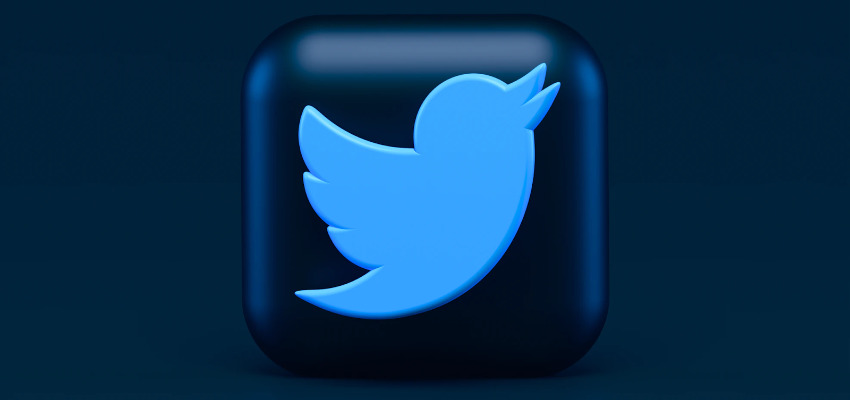Show:
What is an MVP? (Definition, Benefits & Examples of Minimum Viable Product)
If you own a business, you’ve probably heard of the term “Minimum Viable Product” or “MVP.” In an increasingly competitive world, start-ups must get their products to market faster than ever. The minimum viable product is also known as the MVP. The MVP development company approach is one way to accomplish this, but you must provide the right key features that provide value to a diverse customer base to attract clients and investors before the market moves on.

One of the main reasons why start-ups fail is that their initial product is built on assumptions. Entrepreneurs make the mistake of believing that their product will solve a problem better than any other solution on the market, partnering with an MVP development service provider can help avoid some of these pitfalls. They also believe people are concerned enough about the issue to pay for a solution. When these assumptions are incorrect, the start-up fails to take off. For these reasons, developing minimum viable products makes sense (MVPs). It enables businesses to put their ideas to the test and see how users react.
Before we look at some examples of minimum viable products, it’s important to define what is MVP.
The Definition of Minimum Viable Product
What is MVP? The term “minimum viable product” refers to the bare minimum of core features in an app or product that meets the user’s need and thus provides value. An MVP is a bare-bones version of a product built from the ground up to appeal to early adopters.
Frank Robinson, cofounder and president of Syncdev, coined the term “minimum viable product” in 2001, defining it as a one-of-a-kind product that maximizes return on risk for both customer and supplier.
To illustrate, suppose we have a product built from the ground up with numerous features that require a significant amount of time, effort, and money. Users rejected the concept when it was first introduced to the market, and the product was a flop.
In this example, the product team expended all of its resources to create something large that was not even required in the market. The MVP principle states that product teams should instead aim to build something useful with as few features and effort as possible.
When defining minimal viable product is released to the market, it can assist CEOs and product managers in determining the product’s appeal among its user base. An MVP provides a specific value to users, making it saleable and allowing CEOs to test their assumptions about the product’s usability and market demand.

Why is MVP Important?
According to the Bureau of Labor Statistics, approximately 20% of startups fail within the first year of operation. Legal issues, a poor business plan, fierce competition, a lack of money and passion among team members, a poorly analyzed market, and so on are among the reasons. Some of these issues can be predicted and avoided with the help of a minimal viable product.
An MVP includes the fundamental product features required to provide consumers with the necessary solutions. This term is frequently confused with a prototype. An MVP is a finished product, whereas a prototype is just a model.
A minimum viable product enables entrepreneurs to gain valuable first-hand knowledge of their product. A company introduces a product with a limited set of features and resources. They save time and money this way, and they can assess the potential of their product before making large investments. Business owners determine whether there is a market need for their product, whether it is competitive, and whether it can meet the audience’s needs by analyzing consumer feedback. As a result, a company can reduce the number of development iterations while improving a product.
Benefits of Minimum Viable Product
Building a minimum viable product can help you avoid pitfalls you may overlook when you are passionate about your product. With this tool, you’ll get a 360-degree view of your product without any pain. Check out the benefits of mvp listed below.
1. It makes it Easier to Receive Investments
An MVP makes it easier to secure funding. It would help if you persuaded stakeholders that your tech startup is worth investing in, and an eloquent pitch will not suffice. Because an MVP is a finished product, investors can assess its potential and make an informed decision based on accurate results.
2. Allows Business Owners to Test and Improve Product Usability
An MVP is the most basic product version that allows the team to validate user flow and core feature adoption. Product managers and designers can determine whether features are being used as expected by analyzing the user journey and, if necessary, identifying areas for improvement to improve the user experience.
An MVP enables business owners to test and improve the usability of their products. Hundreds of purchases or downloads do not imply success, especially if users stop interacting with your product. It could be an indication of poor UX and product usability. You have an excellent opportunity to analyze user behavior and discover what causes people to abandon your product. Finally, you will make all the necessary improvements before investing money in further product development to increase productivity.
3. Allows Business Owners to Analyze the Demand
An MVP enables business owners to assess demand. When you create a fantastic product, you may believe everyone requires it, but you won’t know for sure until you test it. As a result, it is possible that current market products meet your potential client’s needs or that your product lacks a competitive advantage. In this case, creating an MVP will save you from wasting time and money guessing.

4. Ensures Quick Release.
As you might expect, a minimum viable product has the fewest features. It is because developing these features requires fewer resources and less time than developing a product with a large number of features. It allows product managers to bring the product to market much sooner and test whether the core features meet market demand.
Due to market competition, business owners waste too much time hesitating and doubting the quality of their products. As a result, they risk everything on a product they are unsure of. Years of development and thousands of dollars are frequently required. At the same time, an MVP cuts this journey down by several times. The sooner you launch your product, the sooner you will receive feedback and can act on it.
5. Helps Create a Better Product
An MVP contributes to the development of a better product. Because a minimum viable product entails releasing a product with limited functionality, you can concentrate on the most important features. After testing it on early adopters, you’ll learn what people like about it and what solutions it lacks. People will gladly assist you in improving your product.
Examples of MVP
Following are the minimum viable product examples.
1. Facebook MVP
All Facebook’s (or The Facebook, as it was known when it launched) MVP connected students through their college or class and allowed them to post messages to their boards. Friends Reunited and other social platforms had similar ideas, but the simplicity of Facebook’s approach and the traction it gained as it went viral among college graduates proved unstoppable. It allowed almost all of the subsequent features to build on that success.
2. Amazon MVP
Before launching Amazon, Jeff Bezos used a Concierge or Wizard of Oz MVP type. He collected orders on his own, purchased books, and delivered them to clients. A large number of orders confirmed that people required this service. As a result, he expanded his website and purchased warehouses.
Amazon began by selling books online, taking on the likes of Barnes and Noble, largely stuck in the brick-and-mortar era. In 1994, focusing on books at low prices through a simple web design was all it took for the company to grow and branch out into the retail behemoth it is today.
3. Twitter MVP
Twitter, the world’s most popular social media platform, took an entirely different approach. Odeo, a podcasting platform, was going through a rough patch after Apple released iTunes, forcing them to organize hackathons to figure out what to do next. They came up with the idea for an SMS-based messaging platform during one of the hackathons. It was originally known as “twttr” and was intended to be used only internally, but employees were spending hundreds of dollars on SMS to post to the platform. That demonstrated to the Odeo founders that the concept of “twttr” could be what they were looking for.

4. iPhone MVP
Were you surprised to see the iPhone on the list? You really shouldn’t be. When Apple released the first version of the iPhone, it lacked many basic features, such as copy/paste. And we don’t mean copying an image or a photo; you couldn’t even copy text! Then, search. Finding your colleague’s email address shouldn’t be too difficult, should it? Type their name into the search field wait; there isn’t one? That was, indeed, a reality for iPhone users. Furthermore, if you wanted to send an email and began typing your friend’s address, you would expect some suggestions to appear. Well… But not in your iPhone.
Do you like being able to send your partner a nice picture of a squirrel you met in a park on your way home? That would be ideal, but your iPhone is incapable of handling MMS. The iPhone 2G would also be useless to you. We want to demonstrate that you do not need to build every feature in your product’s MVP. Create the core, then see if the market needs it. You should not gamble if such titans as Apple are unwilling to do so.
Conclusion
Starting with an MVP is always a good idea. This method allows product managers to collect customer feedback and then iterate to add new features as the user base grows. It not only reduces risk, but it also allows developers to create products that are tailored to the needs of their customers. Building a minimum viable product allows you to test the business hypothesis before releasing a full-fledged product, increasing the organization’s confidence to invest more.
Many well-known organizations began with an MVP and grew into a billion-dollar business after many iterations. These success stories support the MVP strategy of launching a minimum viable product before gradually transitioning to a robust, well-tested, and proven development strategy.

 Return to Previous Page
Return to Previous Page








